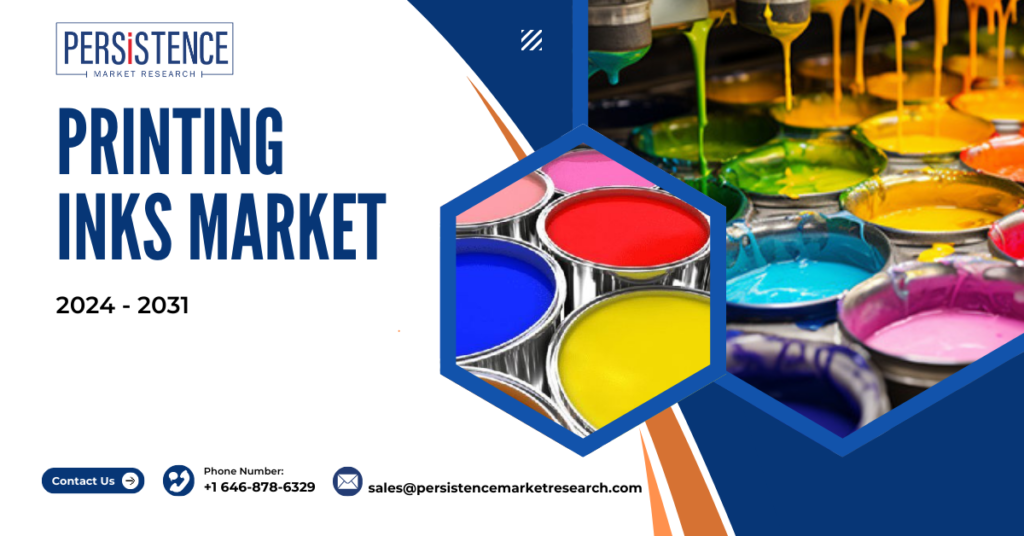
The global demand for printing inks is influenced by a myriad of factors spanning technological, economic, and environmental aspects. These factors shape the industry’s landscape, driving innovations and market dynamics across various regions. Understanding these key influencers is crucial for stakeholders in the printing inks market to navigate challenges and leverage opportunities effectively. Here’s an in-depth look at the principal factors that are propelling the demand for printing inks worldwide.
For More Industry Insight: https://www.persistencemarketresearch.com/market-research/printing-inks-market.asp
Technological Advancements in Printing
Innovations in printing technology are a primary driver of the printing inks market. The development of digital printing, inkjet technologies, and UV-curable inks has expanded the scope and functionality of printing inks. These technologies allow for faster print times, improved print quality, and greater flexibility in substrate use, making printing inks more appealing across various industries, including packaging, commercial, and industrial applications.
Growth in Packaging Industry
The packaging industry is a significant consumer of printing inks, and its growth directly influences ink demand. As global trade and consumer goods markets expand, so does the need for effective and attractive packaging. Printing inks are essential for adding aesthetic value and conveying information on packaging materials, making them integral to branding strategies and consumer engagement.
Environmental Regulations and Sustainability Trends
Increasing environmental awareness and stringent regulations regarding volatile organic compounds (VOCs) emissions are pushing the printing inks market towards more sustainable solutions. There is a growing demand for eco-friendly inks, such as water-based, soy-based, and UV-curable inks, which have a lower environmental impact than traditional solvent-based inks. This shift is not only driven by regulatory compliance but also by consumer preferences for greener products.
Economic Development and Consumer Behavior
Economic growth in emerging markets is another critical factor boosting the demand for printing inks. As economies develop, there is an increased demand for consumer goods, which in turn requires more printed materials for packaging and advertising. Moreover, consumer behaviors, such as the rising popularity of online shopping, have led to increased demand for shipping and packaging solutions that utilize printing inks.
Expansion of Print Media Applications
Despite the digital transformation, print media remains a vital part of the advertising and publication industries. There is continuous demand for printing inks in applications such as newspapers, magazines, books, and other promotional materials. The tactile sensation and visual appeal of printed media often make it a preferred choice over digital counterparts in many contexts.
Technological Disruption and Digital Media
While digital media’s rise poses a challenge to traditional print sectors, it also creates opportunities within the printing inks market. The need for high-quality printing inks that can perform on a variety of substrates is crucial in a world where the blending of digital and physical marketing strategies is commonplace. Furthermore, innovations in ink technology that cater to digital printing are crucial for staying relevant in the rapidly evolving media landscape.
Global Supply Chain Dynamics
The global nature of the supply chains for raw materials required in ink manufacturing also influences the printing inks market. Fluctuations in the availability and price of pigments, resins, solvents, and other key components can impact ink prices and availability, affecting overall market dynamics.
Regulatory Impact and Compliance
Compliance with international safety and environmental standards is crucial for ink manufacturers. As regulations become stricter, particularly in regions such as Europe and North America, manufacturers are compelled to innovate and reformulate products to meet these standards, driving research and development in safer, more sustainable ink technologies.
